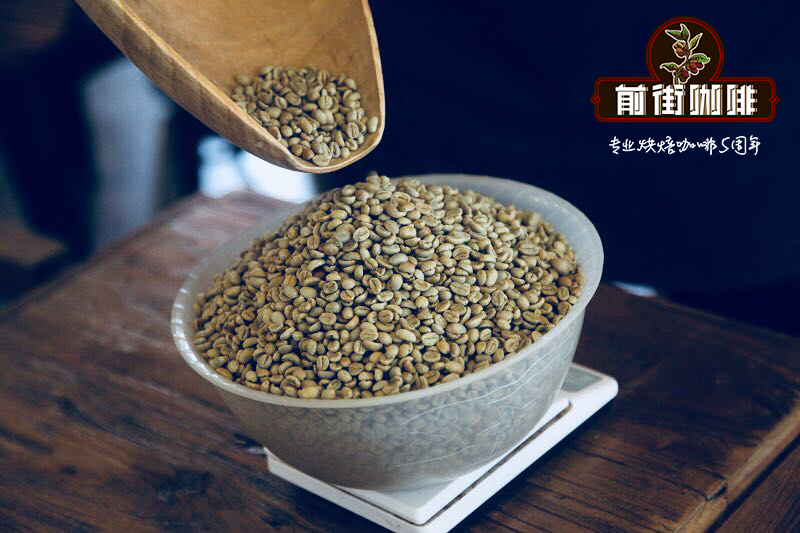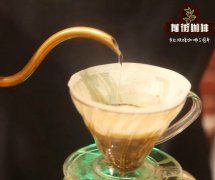Is the coffee delicious in Baoshan, Yunnan, China? What is the development of coffee in Yunnan?

Professional barista communication, please pay attention to coffee workshop (Weixin Official Accounts cafe_style )
Origin of Yunnan Coffee in China
Yunnan can be said to be the only province where Arabica is still planted in a large area. The main planting areas are concentrated in Lincang, Dehong, Baoshan, western Yunnan and Pu 'er Banna, southern Yunnan. The coffee introduced by missionaries in the 19th century is mainly Robusta, and no large-scale planting has been carried out since then. In the 1950s, experts assisted by the Soviet Union put the two mainstream Arabica varieties in the world: The planting technology of iron pickup typica and bourbon was brought to Baoshan, Yunnan Province for cultivation and promotion, which was well received. Later, due to the special period, scientific research and planting tended to stagnate. With the efforts of local agricultural experts after the reform and opening-up, the varieties of iron pickup cultivated by Baoshan State-owned Lujiang Farm and Xincheng Youth Farm also won the first place in the international coffee competition and received rave reviews. However, the Chinese people's cognition of coffee. so that we didn't increase interest in cultivation much. Since the early 1990s, in order to improve the planting enthusiasm of coffee farmers, Baoshan Thermal Crop Institute has introduced the Katim variety bred by Portugal Coffee Rust Research Center through the cross of Timer (medium grain, Tim) and Caturra (small grain, Kadura), and has been popularized and planted with numerous titles. Up to now, this variety has solved many factors such as disease and insect pests disaster and drought resistance very well. The important thing is that the yield per mu has nearly doubled. Although the planting enthusiasm of coffee farmers has been improved, However, this has also become the reason for the low quality of Yunnan coffee since then; At the same time, Nestle and Maxwell entered China and began to promote coffee varieties suitable for instant coffee in Pu 'er and other places: S288, natural hybridization of large seed and small seed, and self-breeding of Indian Arabica Kent hybrid offspring S26, first-class rust resistance ability, but planting difficulty and adaptability are relatively low, and planting has been basically stopped since the beginning of this century. Speaking of which, I think there should be a judgment on Yunnan coffee varieties. What about the excellent iron pickups and bourbon? New promotion planting, or left a lot of hills, continue to plant old varieties of coffee, but, popular, backward places do not have the origin and protection of a single species, a mountain, 10 households, all kinds of, a gust of wind blowing, pollen flying everywhere... hehe. The problem of variety makes Yunnan coffee really lose at the starting line. In addition, the environmental problems of coffee planting, although it can reach the hot zone standard, are far away from the equator, evaporation problems, large-scale Yunnan coffee planting land is less than 1100m above sea level, Yunnan drought in recent years, and frost period problems in the producing areas, etc., all of which make coffee planting unable to be guaranteed normally, directly affecting the quality of the products. As for other processing problems and coffee farmers 'literacy problems, there is not much to say. Tea farmers drink tea for generations, but coffee farmers may not have drunk coffee in their whole lives. Say so much, but it doesn't mean you haven't drunk a cup of good Yunnan coffee. If the post-processing and baking are good, coffee from several hills such as Pu 'er Manlaojiang, Manzhongtian Kadura, Baoshan Lujiang Baihualing Iron Pickup, Nankang Boben, etc. is still good, especially Nankang, the old variety with an altitude of 1800m.
How do you cook it to taste good?
Yunnan Huaguoshan Coffee Hand Chong Suggestions:
15g powder, medium grind (small Fuji ghost tooth knife 4 grind)
v60 filter cup
88-89 temperature of water
30g water for the first injection
for 27 seconds.
Fill to 105g water cut off
Wait for the powder bed water to drop to half before injecting water
Fill slowly until 225g of water
Not the tail.
Water to powder ratio 1:15
--END
For more professional coffee exchanges, please scan the code and follow WeChat: qiannjie

Please indicate the source for reprinting.
Important Notice :
前街咖啡 FrontStreet Coffee has moved to new addredd:
FrontStreet Coffee Address: 315,Donghua East Road,GuangZhou
Tel:020 38364473
- Prev

The Historical Story of Kona Coffee in Hawaii when was Hawaii Kona Coffee first planted
For more information on coffee beans, follow the Coffee Workshop (Wechat official account cafe_style) in 1813, a Spaniard first grew coffee in the ManoaValley Valley of Oahu, which is today the main campus of the University of Hawaii. In 1825, a British agronomist named John Wilkinson transplanted some coffee from Brazil.
- Next

A brief introduction to the Mexican Coffee Farm Montegrand what is the story of the Mexican coffee producing area
For more information on coffee beans, please follow the coffee workshop (Wechat official account cafe_style). It faces the sea on both sides and is the center of ancient Indian culture; it is the fourth largest economy in America and the 12th economy in the world; it is close to the most powerful country in the world and has many grudges with it; it has the highest proportion of immigrants and the country with the largest number of expatriates.
Related
- How did the Salvadoran coffee industry develop in Central America?
- What exactly does the golden cup extraction of coffee mean?
- The Origin of Coffee flower
- [2023 Starbucks World Earth Day] there are more meaningful things besides free Starbucks coffee!
- What kind of coffee is there in Spain? 9 Flavors of Spanish Coffee
- Aromatic African coffee| Kenya's coffee culture and historical production area
- Liberica Coffee Bean knowledge: the characteristics of Liberian Coffee beans of the three original species of Coffee beans
- The origin and formula of Spanish latte introduces the taste characteristics of Bombon coffee in Valencia, Spain.
- How to adjust the solution of over-extracted coffee
- What is the tasting period of coffee beans? What is the period of coffee and beans? How should coffee wake up and raise beans?

